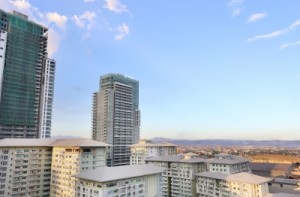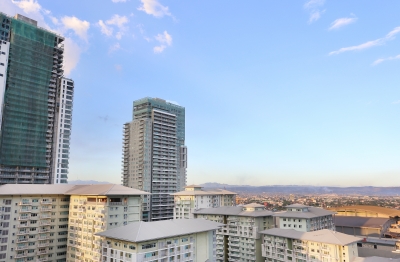 The Philippines’ gross domestic product (GDP) grew 6.3% in the last quarter of 2015 and 5.8% for the full year, making the country one of the fastest-growing developing economies in Asia.
The Philippines’ gross domestic product (GDP) grew 6.3% in the last quarter of 2015 and 5.8% for the full year, making the country one of the fastest-growing developing economies in Asia.
The fourth-quarter GDP is the highest quarterly growth for the year, but is lower than the 6.6% posted in the same period in 2014, according to the Philippine Statistics Authority (PSA).
The full-year growth is likewise slower than the 6.1% growth in 2014 and is lower than the government’s target. Socio-Economic Planning Secretary Arsenio Balisacan said that although the 2015 GDP is lower, “this growth is respectable given the difficult external environment, the onset of El Nino, and the challenges in government spending in the first semester.”
He added that in 2015, among the major developing countries, the Philippines will likely be among the fastest in Asia, next to India, China, and Vietnam. Finance Secretary Cesar Purisima, in a separate statement, said the country’s full-year GDP is the fastest among the ASEAN-5.
Balisacan said that compared to previous years, growth in 2015 was driven by a much stronger domestic demand.
He noted that government spending accelerated to 9.4% last year compared to 1.7% in 2014, while growth in public and private investments more than doubled to 13.6% from 2014’s 5.4%. The growth was primarily led by public construction, which grew by 20.6% from 6.3% in 2014. As investments propped up employment and incomes, and inflation rate stayed record low, household consumption also grew by 6.2%, Balisacan noted.
He added that while export growth had been lackluster at 5.5% in 2015 compared to the previous year’s 11.3%, the export of services had been very strong given the business process outsourcing (BPO) sector’s robust performance.
On the supply side, growth remained driven by the services sector, whose expansion accelerated to 6.7% in 2015 from 5.9% in 2014. This was followed by industry which grew 6%, while agriculture remains a challenge with its 0.2% growth.
“With sound fundamentals and ongoing structural changes in the economy that make it more resilient to shocks, we can expect higher growth for 2016 as the global economy also picks up,” Balisacan said.
Challenges for next leaders
Nonetheless, there remain challenges that the next administration will continue to confront. “Given serious threats from climate change and the realities of a global economy, we cannot afford to be complacent,” the Cabinet official noted.
“The biggest lesson we have learned over the past six years is that we need to build resiliency in each sector of the economy and the socioeconomic resiliency of each individual and community,” Balisacan said.
He said each sector has to diversify its products and markets. The agriculture sector, in particular, is vulnerable to weather shocks which, of late, have become more frequent and more extreme (from El Niño to Typhoon Yolanda to bigger floods).
The industry sector, on the other hand, is much affected by external demand, which has been weak over the past six years. For both agriculture and industry, innovation and diversification are critical strategies, Balisacan noted.
The services sector, on the other hand, “has demonstrated that it can reach greater heights as more opportunities open for trade in services” and that the country needs to “ensure that the policy environment is one that allows easier entry for firms and encourages innovation.”
The Cabinet official said the economy has to expand its capacity to support higher growth.
“This would be by way of infrastructure development, efficient transport and logistics system, and competent, yet malleable, human capital,” Balisacan said.
Equally important is the need to build the socioeconomic resiliency of individuals and communities, he added.
Balisacan, who moves to the newly created Philippine Competition Commission this week, said they “are hopeful that the next leaders of this country will sustain the programs and reforms that have gathered significant gains over the years.”
“We have seen that investor confidence reached a high level as soon as the current administration’s platform of good governance moved forward and gained credibility. Now, in the coming elections, the challenge is for the Filipino voters to choose the right leaders who have the integrity and the ability to build strong institutions—credible institutions that can take the economy to an even higher level and significantly uplift the quality of life of the Filipino people,” he said.





